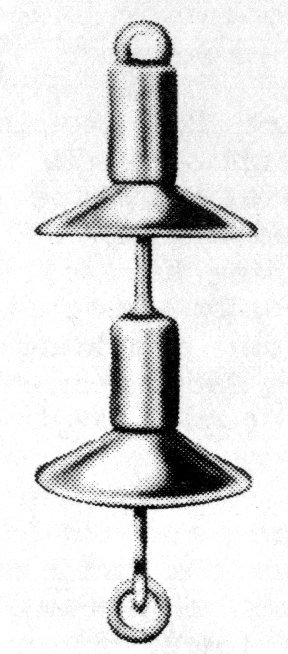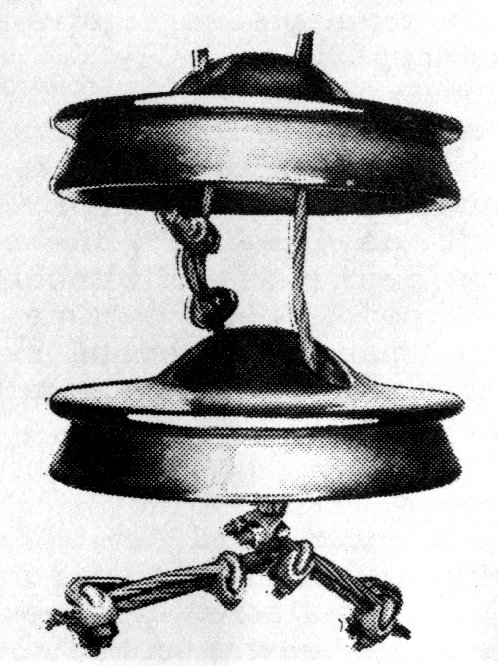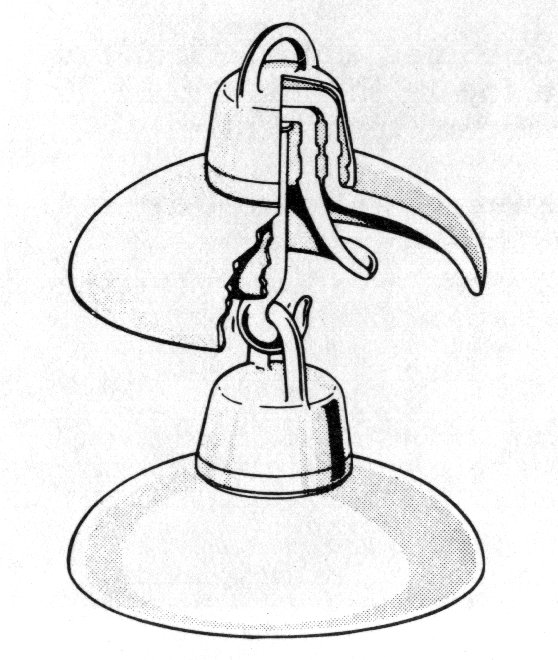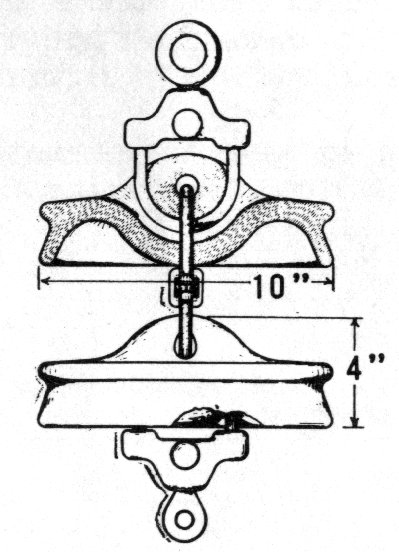The High Voltage Transmission Insulator
by Donald Fabbi
Reprinted from "INSULATORS - Crown Jewels of the Wire", February 1972, page 2
As a recent subscriber to "Crown Jewels", I would be remiss if I
didn't commend you on your excellent publication on behalf of all insulator
collectors everywhere.
The history of a product's development in any industry is one of constant
change. This is particularly true in the history of high voltage transmission
insulators. It is in this regard I would offer the following information in the
development of high voltage transmission insulators.
The year of 1882 saw the beginning of electrical transmission when Thomas
Edison installed a 1,200 horsepower steam engine and generator in a warehouse in
New York and began furnishing power at 1300 volts D.C. through a network of 37
miles of telegraph line to a number of subscribers who used this power for
illuminating purposes.
The next decade witnessed an electrical transmission "boom" which
brought electrical energy to nearly every corner of the United States.
Earliest electrical transmission lines made use of glass, pin type insulators
patterned, naturally, after telegraph insulators. When transmission voltages
began to increase and improved insulators became necessary, designers simply
enlarged the size of these glass insulators. As the efficiency of generators and
related electrical equipment improved, the transmission voltages rose rapidly.
With rising voltages, soon the design limitations of glass were exceeded. The
greater mechanical strength and favorable electrical properties of porcelain
were discovered around 1890, and this material soon became the successor to
glass.
Early porcelain insulators were manufactured by makers of chinaware and door
knobs by what was known as the "Dry process".
But the inevitable result was that, once again, the capabilities of this
insulating material were exceeded by new, higher voltage requirements. "Dry
process" porcelain insulators had relatively low strength and high
porosity, causing frequent failures in service.
After much research in porcelain manufacturing techniques, the problem of
porosity was eliminated when the "Wet process" was devised in 1893.
"Wet process" insulators with greater dielectric strength and smooth
glazed surface were capable of meeting the demands imposed upon them by
increasing voltages.
Toward the end of the nineteenth century, these insulators were being
manufactured in the multi-part designs which have descended into the picture of
today almost unchanged. These multi-part pin type insulators permitted the
transmission of up to approximately 90,000 volts. After 1900, ever increasing
demands for electric service across the country caused transmission voltages to
continue climbing. Pin type insulators could not support the larger electrical
conductors which were required to handle these higher loads. The result was the
development of suspension insulators, known then as the "underhung"
type.
|

|

|
| FIRST KNOWN "UNDERHUNG" OR "SUSPENSION"
INSULATOR OFFERED IN 1903, WITH METAL CAP CEMENTED INTO PORCELAIN BODY. |
"BUCK-HEWLETT" FLEXIBLY SUSPENDED INSULATOR BEFORE
ATTACHING AND CONNECTING HARDWARE WAS DEVELOPED. |
|

|

|
| TYPICAL CEMENTED MULTI-PART CAP-AND-PIN SUSPENSION INSULATOR |
"BUCK-HEWLETT" WITH ATTACHING AND CONNECTING
HARDWARE. |
The first suspension insulators differed from those in use today only by the
fact that these original assemblies were rigid, rather than articulated, with
the pin of each insulator being integral with the cap of the insulator,
immediately below it.
The development of the suspension insulator, of course, allowed transmission
at higher voltages and the use of even larger conductors.
When suspension insulators first appeared, transmission line engineers
improvised the connectors and conductor attachments from pieces of stranded
copper conductor joined by wire rope clips.
Soon the rigid suspension Insulators were disappearing entirely in favor of
the new suspension insulators with flexible connections - known then as the
"Buck-Hewlett" type, later simply as "Hewlett", these first
appeared around 1907- again before use of attaching and connecting hardware was
developed. These became almost universally accepted by 1915; many installations
made then are still providing satisfactory service. The "Hewlett"
insulator had button-ended copper or forged steel connecting links coupled by
bronze or galvanized fittings.
The trend toward flexibility - connected cap and pin insulator strings -
began to distinguish Hi-Lines as we know them today. Insulators appeared in many
forms as higher line voltages, heavier conductors, and wider tower spacing
became common practice.
I hope that this information might assist those collectors curious as to why
the change to the development of porcelain power line insulators as opposed to
the traditional glass ones.
I have access to the Hewletts (sometimes called "monkey face" due
to the appearance of the top of the insulator) and am curious as to information
on current trade value.
I am looking forward to future issues of "Crown Jewels". It's a
great magazine.
| 